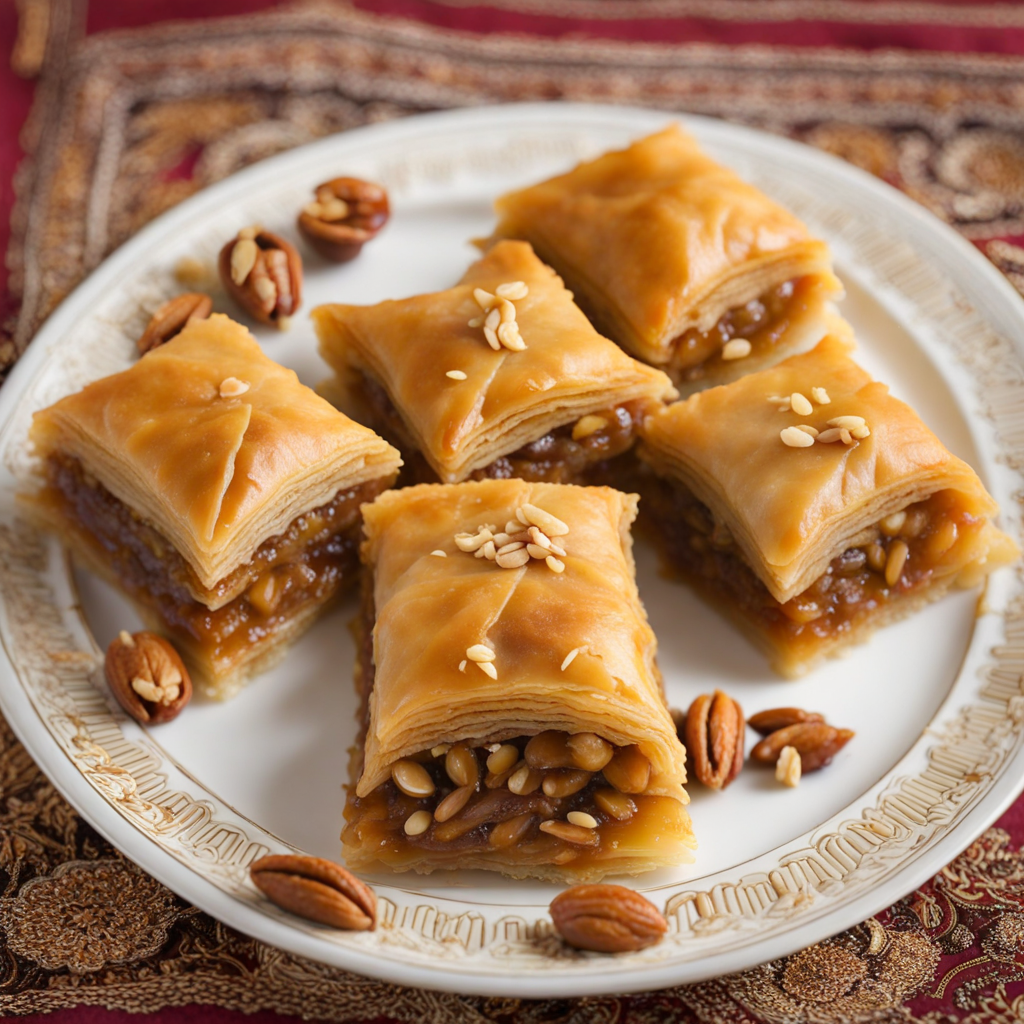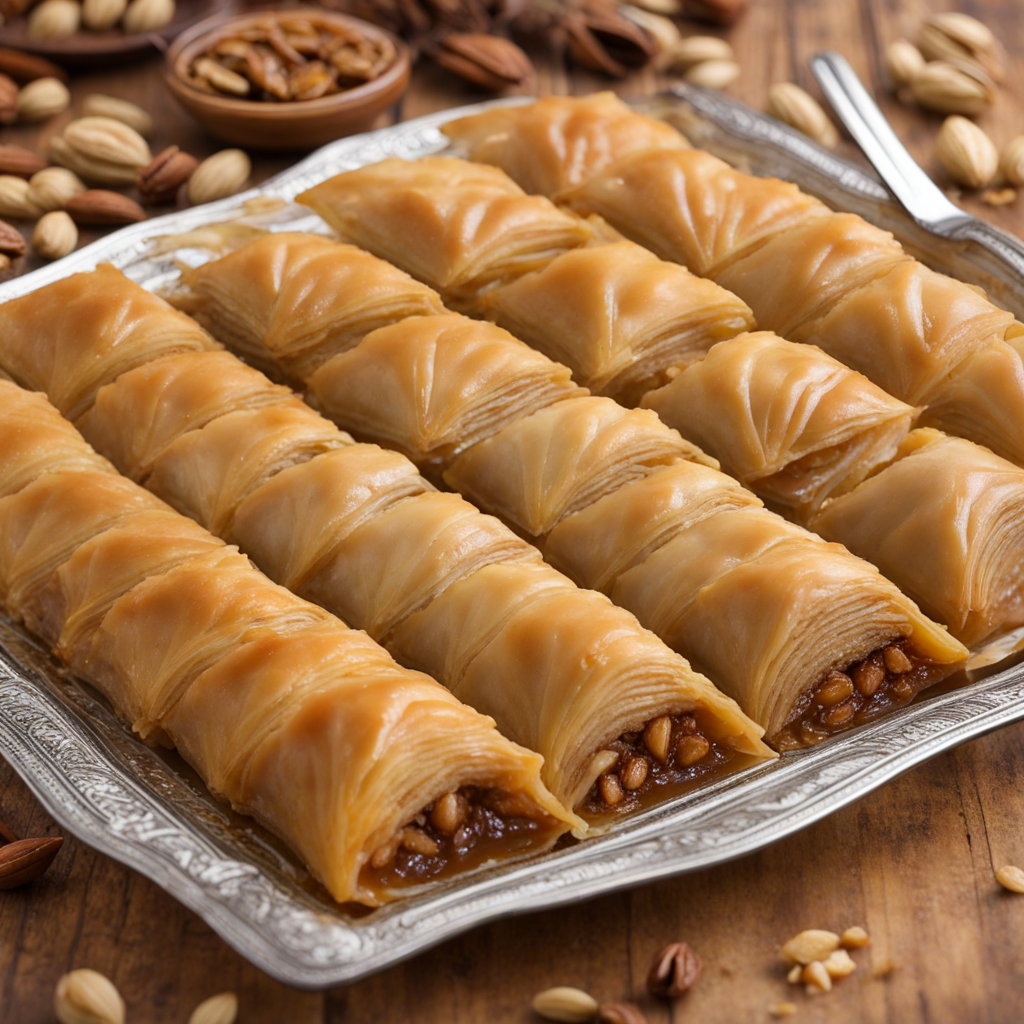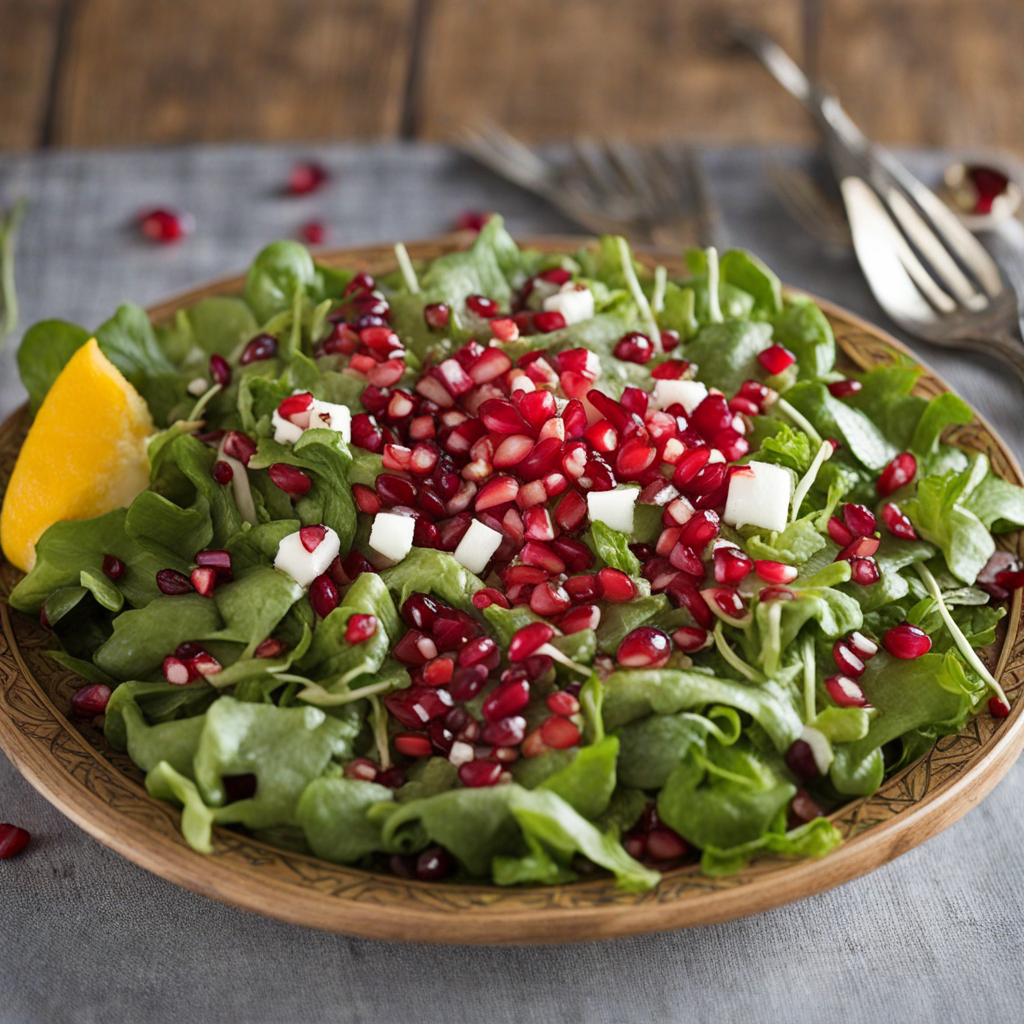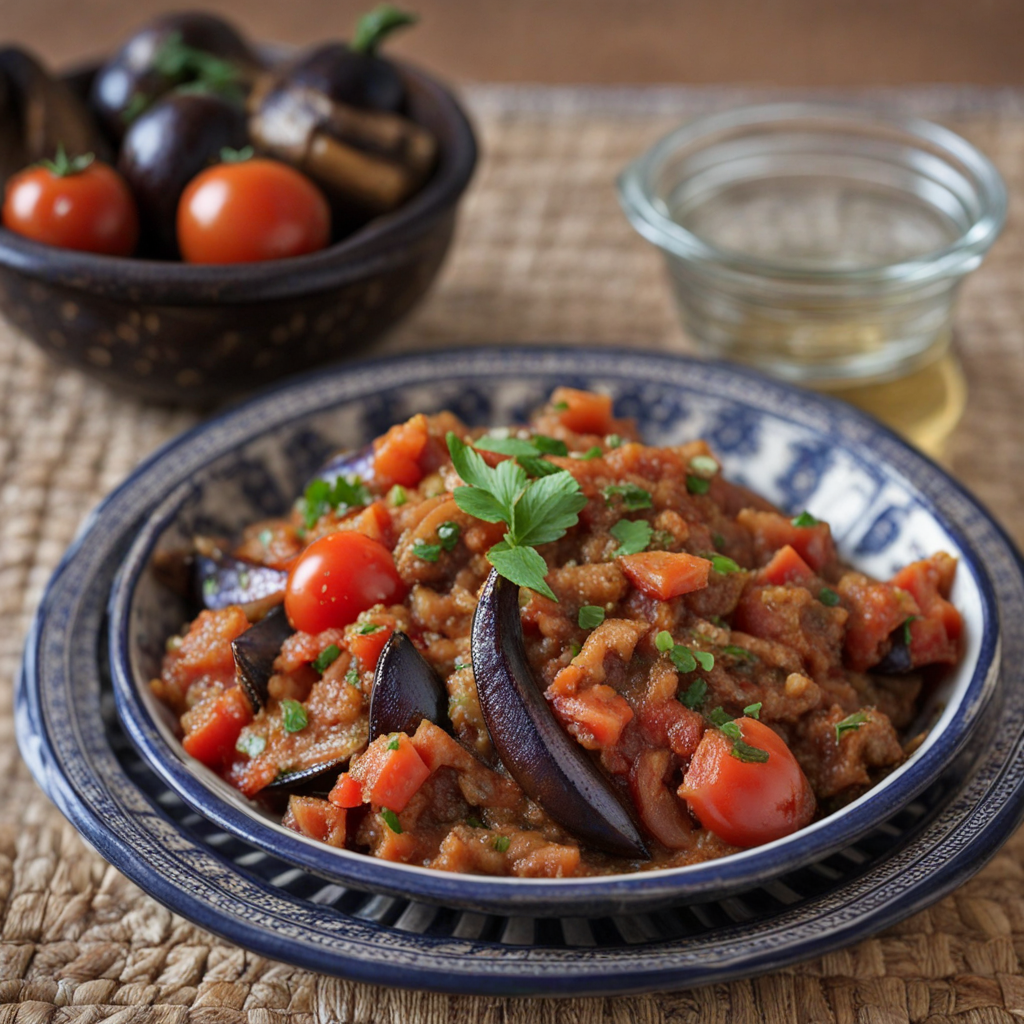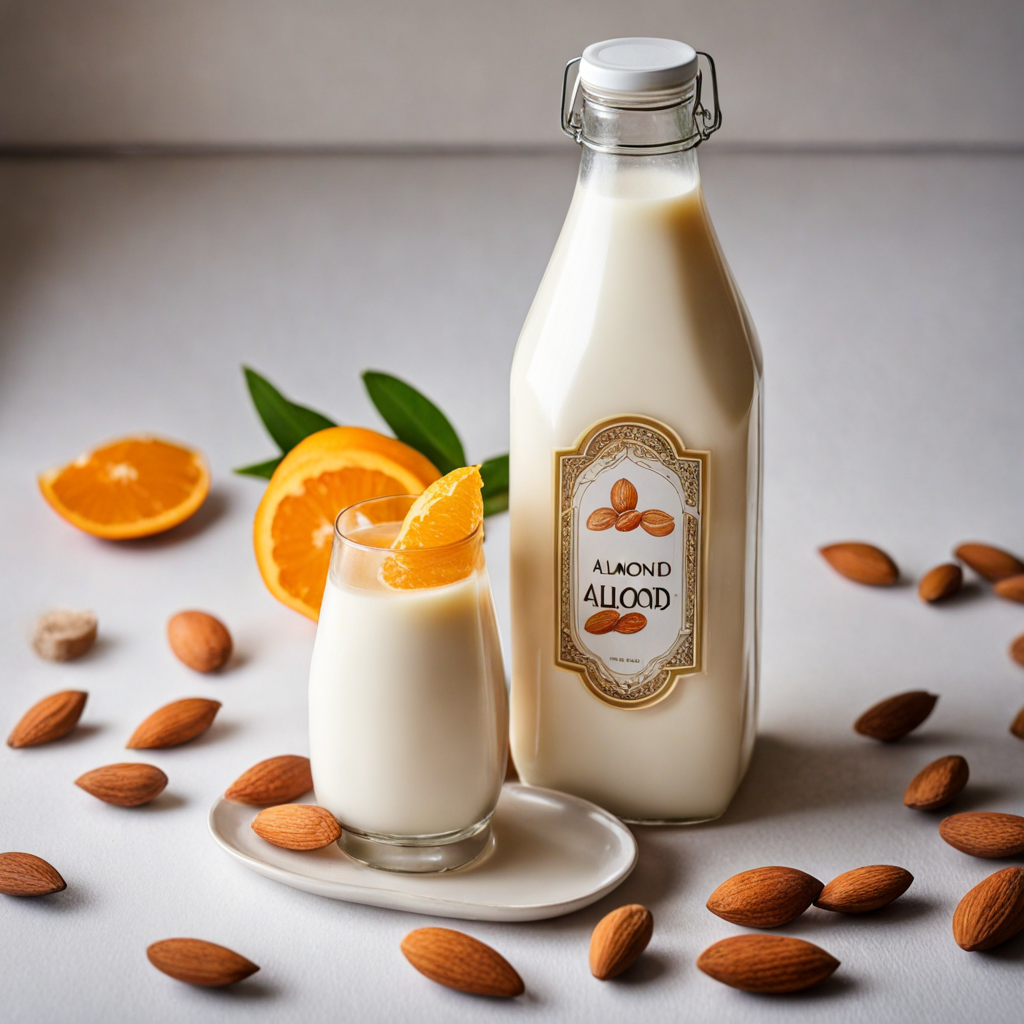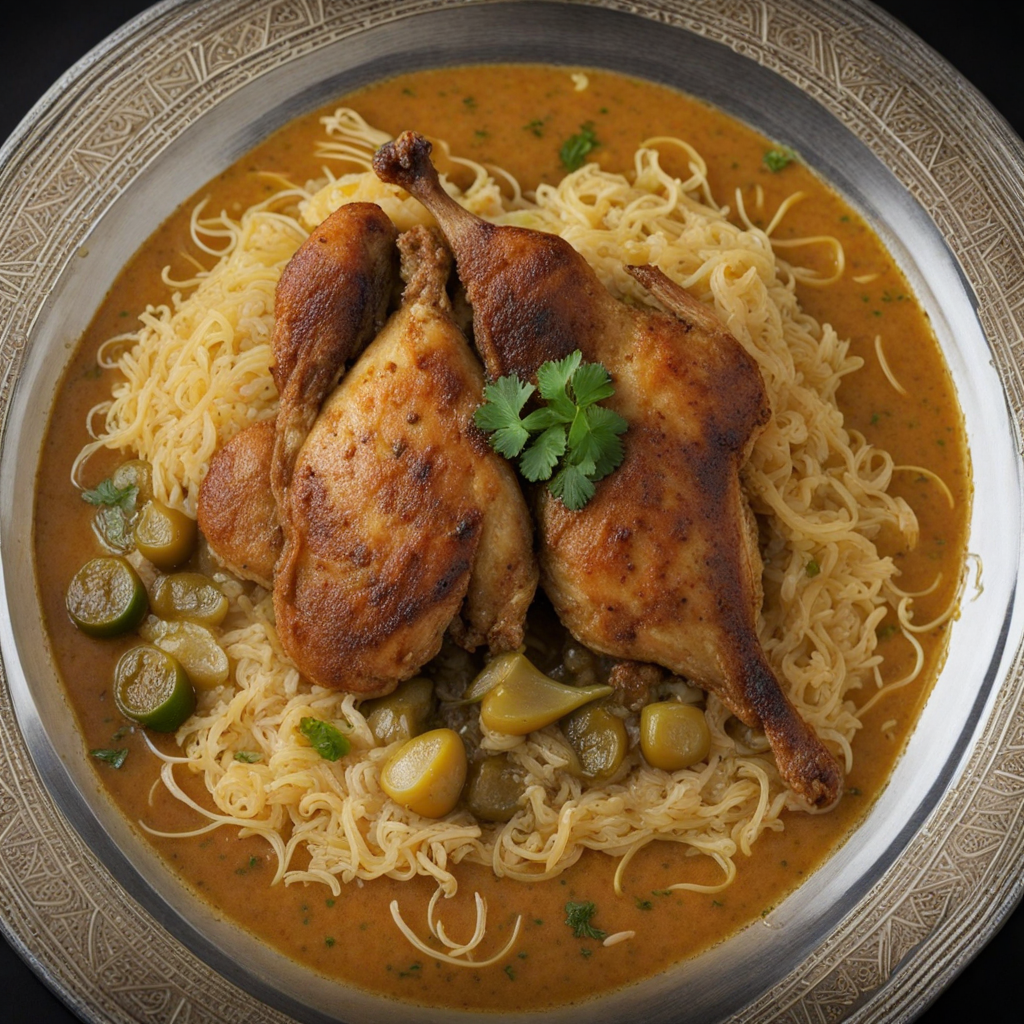Baklava
Baklava, a sweet and flaky pastry, is a delightful treat that has found its way into the rich tapestry of Moroccan cuisine. This dessert is crafted from layers of thin phyllo dough, which are meticulously brushed with melted butter to create a crispy and golden exterior. Between these layers, you'll find a generous filling of finely chopped nuts, typically a mix of walnuts, almonds, and pistachios, all blended with aromatic spices like cinnamon and cardamom that infuse the pastry with warmth and depth. The texture is a beautiful contrast, with the crispiness of the phyllo harmonizing with the crunch of the nuts and the syrupy sweetness that binds it all together. Once baked to perfection, Moroccan baklava is generously drenched in a fragrant syrup made from honey, sugar, and a splash of citrus, often flavored with orange blossom or rose water. This syrup seeps into the layers, creating a moist yet crunchy experience that melts in your mouth. The infusion of these floral notes elevates the baklava beyond just a dessert; it becomes an aromatic journey that transports you to the bustling souks of Morocco, where the scent of spices and sweets fills the air. Each bite is a little celebration, perfectly balancing sweetness with the earthiness of the nuts. Traditionally served in small, bite-sized pieces, baklava is often enjoyed during special occasions, gatherings, and celebrations, making it a beloved staple in Moroccan culture. Its rich flavors and intricate textures invite you to savor each morsel, making it an ideal dessert to share with friends and family. As you embark on this culinary adventure, allow the layers of history and tradition to envelop you, and let the unique taste of Moroccan baklava leave an unforgettable impression on your palate.
How It Became This Dish
The History of Baklava: A Cultural Delicacy from Morocco Introduction: The Sweet Symphony of Baklava Baklava, a rich and sweet pastry made of layers of filo dough filled with chopped nuts and sweetened with syrup or honey, holds a prominent place in the culinary tapestry of Morocco. While its origins are often debated, the history of baklava is a fascinating journey through time, culture, and geography, showcasing the diverse influences that have shaped this beloved dessert. Origins: A Tapestry of Cultures The origins of baklava can be traced back to ancient civilizations in the Middle East and the Mediterranean. Historical records suggest that the earliest form of baklava may have emerged in the Assyrian Empire around the 8th century B.C. The Assyrians are believed to have layered unleavened bread with nuts and honey, a precursor to the modern version. However, it was during the Byzantine Empire that the pastry began to take on its recognizable form, with the introduction of thin layers of dough similar to what we now know as filo. The spread of baklava across the region was profoundly influenced by the Ottoman Empire, which expanded from the 14th century onward. As the Ottomans conquered various territories, they adopted and adapted local culinary traditions, including those of Morocco. By the 15th century, baklava had firmly established itself in the kitchens of the Ottoman palace, where it became a symbol of luxury and indulgence. Cultural Significance in Morocco In Morocco, baklava is more than just a dessert; it is a cultural emblem that reflects the rich heritage and social customs of the country. It is often prepared for special occasions, such as weddings, religious celebrations, and family gatherings. The preparation of baklava is a communal activity, bringing together family members to share in the labor and joy of creating this intricate pastry. The Moroccan version of baklava, known as "bakhla," is distinguished by its unique blend of spices and the use of local ingredients. Almonds, walnuts, and pistachios are commonly used, often flavored with spices such as cinnamon and orange blossom water. The pastry is typically cut into diamond or square shapes, and the syrup that soaks into the layers is often infused with citrus, adding a distinctive Moroccan flair. Baklava also plays a role in hospitality, as it is customary to serve this sweet treat to guests as a gesture of welcome and generosity. The act of sharing food, especially a delicacy like baklava, embodies Moroccan values of community and togetherness. Development Over Time: A Culinary Evolution As baklava made its way to Morocco, it underwent various transformations, influenced by the country’s diverse culinary landscape, which is characterized by a rich fusion of Berber, Arab, and Andalusian traditions. The introduction of new ingredients from trade routes, including sugar, spices, and nuts, enriched the flavor profile of baklava. In the 19th and early 20th centuries, Morocco saw an increase in cultural exchange due to colonial influences. French colonization introduced new techniques and ingredients that further diversified Moroccan cuisine. The fusion of French patisserie methods with traditional Moroccan baking gave rise to new interpretations of baklava, sometimes incorporating chocolate or cream into the pastry layers. In contemporary Morocco, baklava continues to evolve, with chefs and home bakers experimenting with flavors and presentations. Modern variations might include the use of fruit fillings or the incorporation of local ingredients like dates or figs. The artistry involved in crafting baklava has also become a celebrated skill, with bakers showcasing their creations at food festivals and culinary competitions. Baklava in the Global Context As globalization has taken hold, baklava has transcended its origins and become a beloved dessert worldwide. It is now found in various forms across the Mediterranean, the Middle East, and even in Western countries. Each region has embraced baklava, putting its unique twist on the classic recipe. In Greece, for example, the use of walnuts and a honey-based syrup is prevalent, while Turkish baklava often features a higher ratio of nuts and a more intricate layering process. In Morocco, baklava is often enjoyed alongside mint tea, a staple of Moroccan hospitality. The combination of the sweet, nutty flavors of the baklava with the refreshing notes of mint tea creates a delightful balance that enhances the overall experience. Conclusion: A Timeless Treasure Baklava's journey from ancient civilizations to modern Moroccan kitchens is a testament to its enduring appeal and cultural significance. It stands not only as a delicious dessert but also as a symbol of hospitality, community, and the rich tapestry of culinary traditions that define Morocco. As baklava continues to delight palates around the world, it serves as a reminder of the interconnectedness of cultures and the ways in which food can bridge divides, bringing people together in celebration and joy. Whether enjoyed at a festive occasion, a family gathering, or simply as a sweet indulgence, baklava remains a timeless treasure that embodies the spirit of Moroccan cuisine and hospitality.
You may like
Discover local flavors from Morocco


